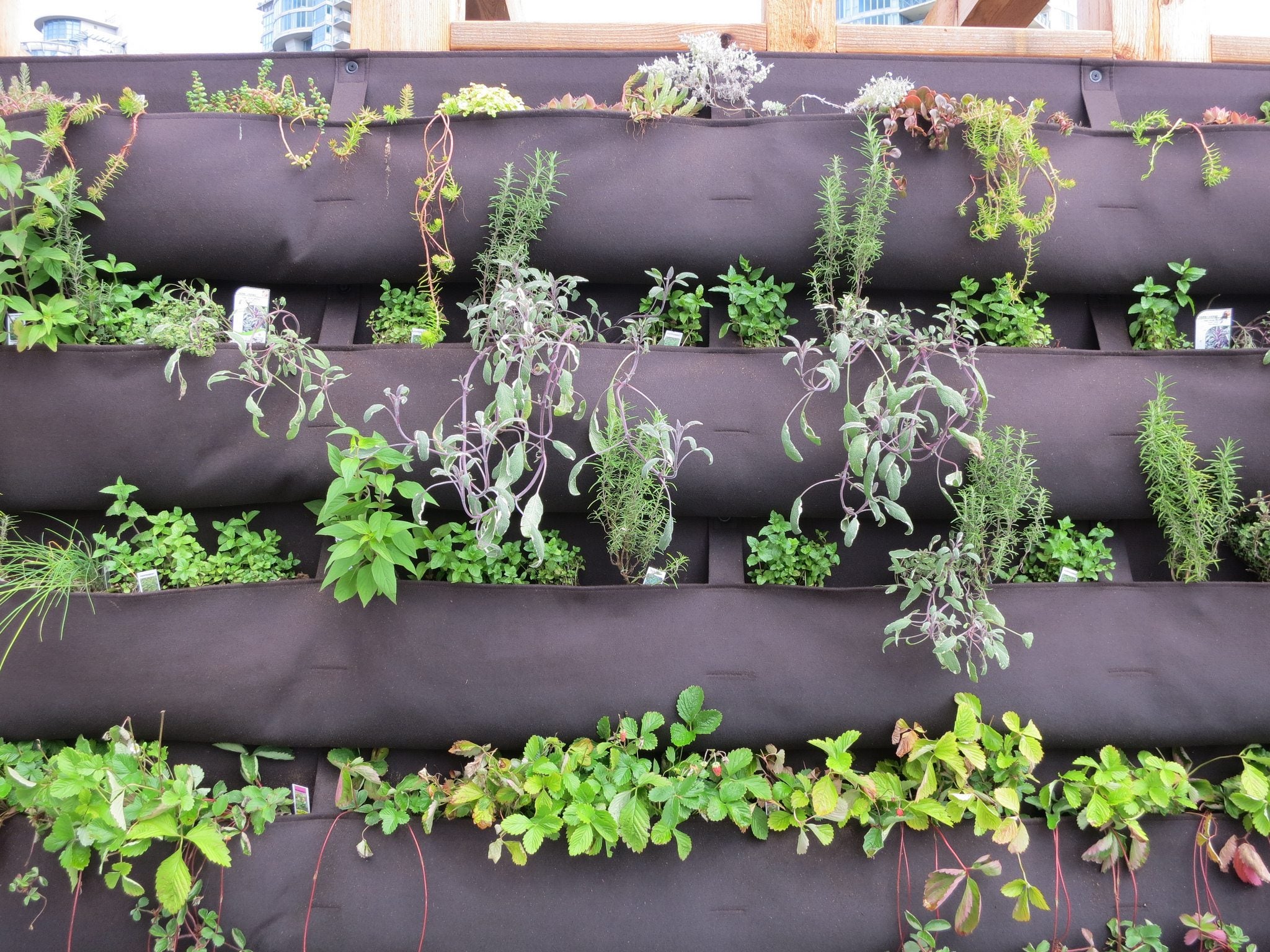
If you have a small garden plot or even no garden space other than a deck or patio, the perfect gardening technique for you is vertical gardening. Plants that don't require deep root depth are ideal candidates for vertical gardens, and an herb wall garden is a perfect example. Outdoor and indoor vertical herb garden planters can be purchased but you can create DIY herb walls, too.
How to Make an Herb Wall Garden
Vertical herb garden ideas abound and it's a creative, fun and useful project. Let's look at how to make a DIY herb wall. There are all sorts of really cool indoor and outdoor vertical herb gardens that can be purchased, and most of them are pretty pricey. If you like to tinker a bit and have more time than money, a DIY herb wall garden is the perfect fit for you. Vertical herb garden planters don't need to be fancy, just functional. Start by building a frame either out of wood or fabric that is sturdy enough to hang on a wall. A great repurposing idea and good for those of us who are less than handy is to use a wood pallet as our frame. These are often laid out for free in industrial areas. Attach a plastic sheet or garden film to the back of the frame or pallet to prevent leaking. Then attach a layer of fabric, such as burlap or felt, to the frame or the inside of the pallet. This acts as a pocket for the plant to grow inside. Staple it to three sides, leaving the top end open. At this point you may want to set up an irrigation system or drip line to facilitate watering of your wall garden. Turn your construct so the open end is up and fill the whole thing with well-draining soil amended with compost. Make small slits or holes in the fabric and plant the herb seeds or seedlings. If you are starting from seed, keep the construct in a horizontal position while germinating. Once the plants have established, you can hang it vertically.
Additional Vertical Herb Garden Ideas
You can also use upended plastic bottles with the bottoms cut out to plant herbs. They can be hung uniformly or staggered upon a construct of hog wire, on an existing wall or fence, or from wires strung from a frame. Really, anything you can think of can be repurposed for planting herbs. It can be as simple or as complex as you are capable. If you are willing to spend a bit more money, you can invest in modular plastic panels or reservoir systems. They are about 20 inches (51 cm.) square with 45 cells in which to place the herbs. The cells are angled down at the rear to keep the soil and plants from falling out. Drip irrigation can be installed across the top of the panel within built-in slits that allow the water to trickle down the panel, watering all the cells. The cells are attached to a simple frame and planted horizontally. Leave the wall horizontal for a month or so to allow the roots to establish and then hang it from two hooks in the roof eaves. Low growing herbs are perfect for a vertical herb wall and can be interspersed with annuals or perennials to create even more drama. You can even tuck in some strawberries. Choose plants and herbs with different textures and colors to add interest to the piece. After all, an herb wall garden is not only useful, it functions as a piece of art as well.
Sign up for the Gardening Know How newsletter today and receive a free copy of our e-book "How to Grow Delicious Tomatoes".

Amy Grant has been gardening for 30 years and writing for 15. A professional chef and caterer, Amy's area of expertise is culinary gardening.
